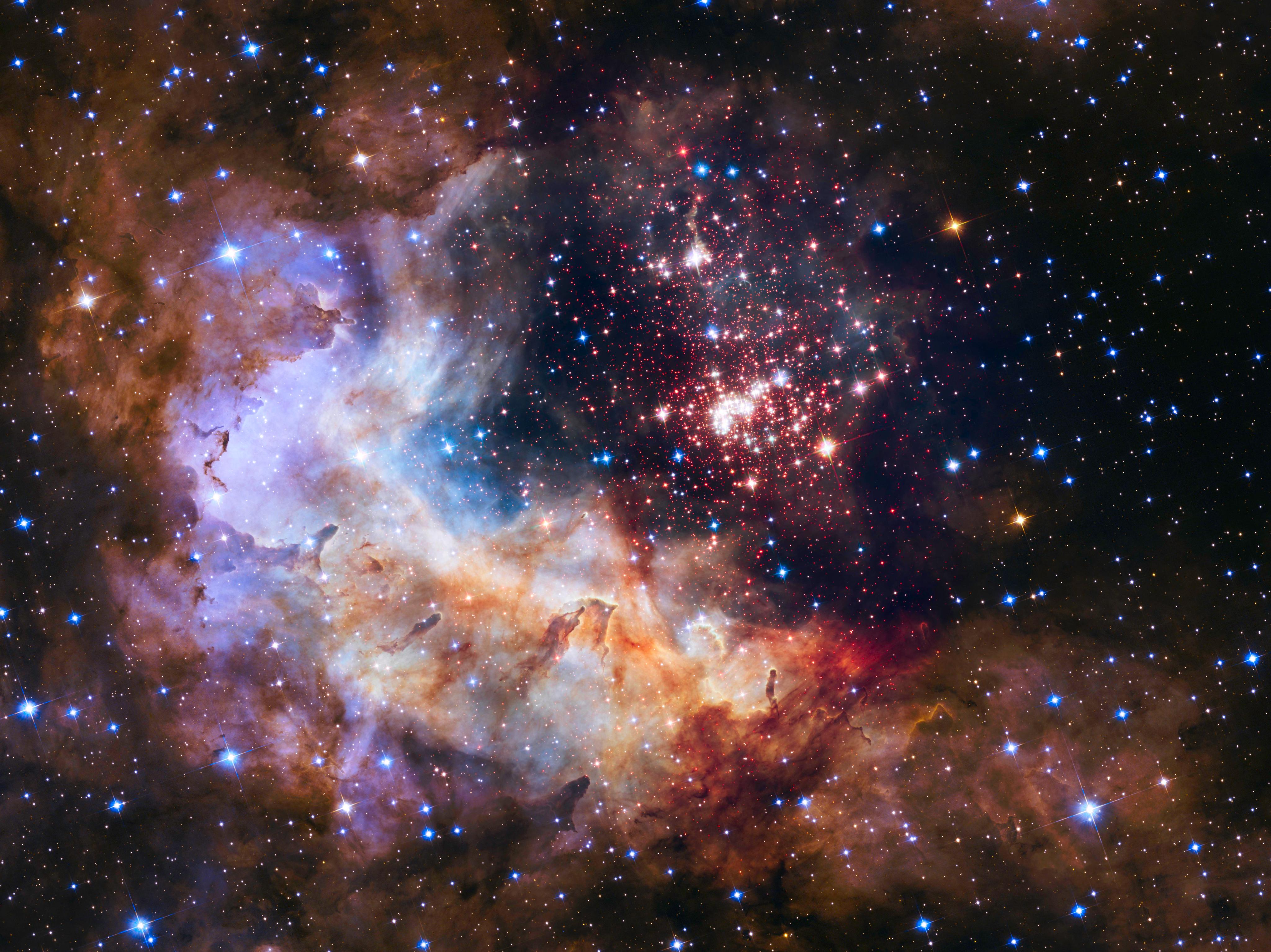
Westerlund 2
Westerlund 2, a giant cluster of 3,000 stars, resides in a raucous stellar breeding ground known as Gum 29. The Hubble Space Telescope pierced through the dusty veil shrouding the stellar nursery by observing near-infrared light, giving astronomers a clear view of the nebula and the dense concentration of stars in the central cluster. The cluster measures between 6 to 13 light-years across. The giant star cluster is only about 2 million years old and contains some of our galaxy's hottest, brightest, and most massive stars. Some of its heftiest stars unleash torrents of ultraviolet light and hurricane-force winds of charged particles that etch at the enveloping hydrogen gas cloud. When the stellar winds hit dense walls of gas, the shockwaves may spark a new wave of star birth along the wall of the cavity. The red dots scattered throughout the landscape are a rich population of newly forming stars still wrapped in their gas-and-dust cocoons. These tiny, faint stars are between 1 million and 2 million years old — relatively young stars — that have not yet ignited the hydrogen in their cores. The brilliant blue stars seen throughout the image are mostly foreground stars. Because the cluster is very young — in astronomical terms — it has not had time to disperse its stars deep into interstellar space, providing astronomers with an opportunity to gather information on how the cluster formed by studying it within its star-birthing environment. For more information, visit: https://hubblesite.org/contents/news-releases/2020/news-2020-15?news=true
